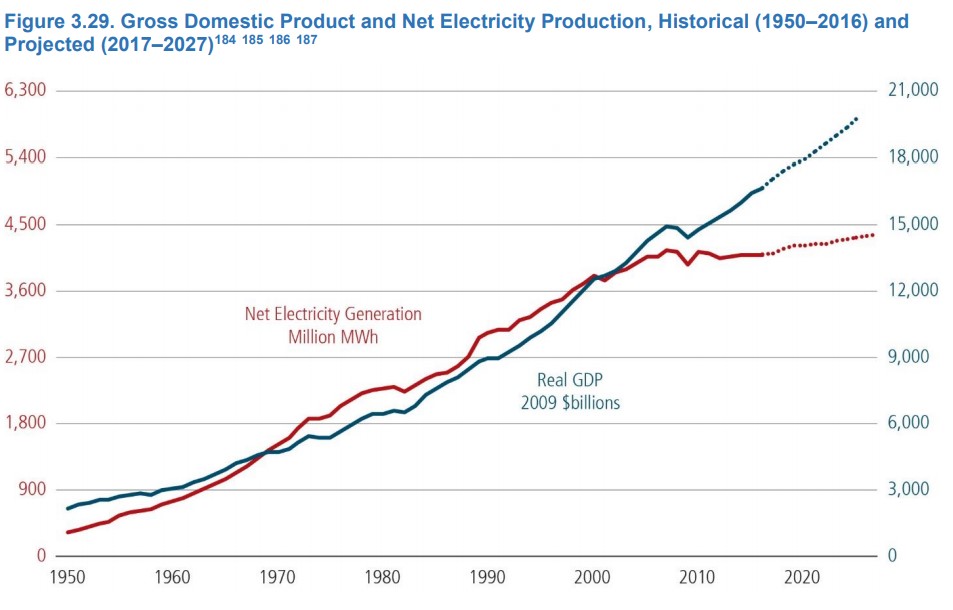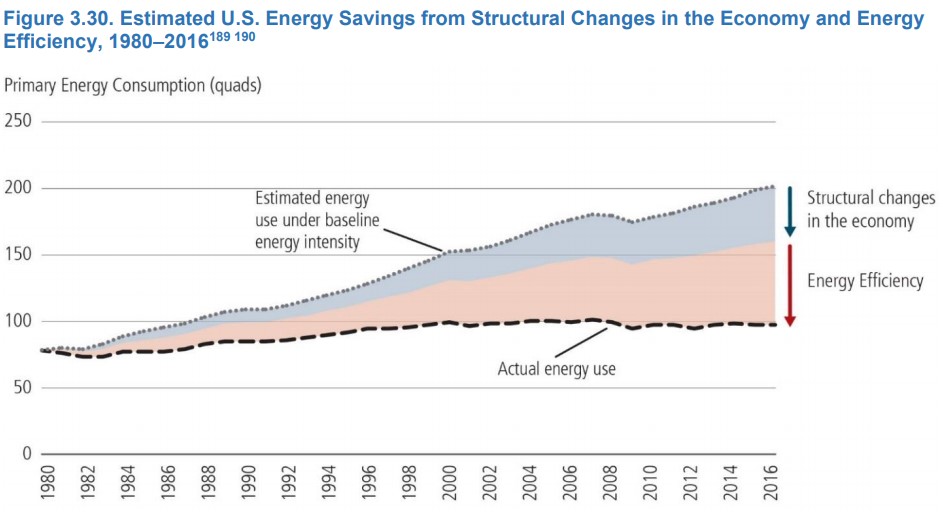In DOE's Grid Study, Many Reminders of the Success of Energy Efficiency
Let's Save Energy
Alliance to Save Energy's Blog

The Department of Energy has released its long-awaited Staff Report to the Secretary on Electricity Markets and Reliability (informally, the “Grid Study”). Among its findings, the report describes several key impacts of energy efficiency on the electric grid. While the report charts little new territory, it is notable that it provides evidence of the powerful, positive role that energy efficiency plays in meeting grid reliability, resilience, and affordability goals.
The study finds that flattening electricity demand is contributing to the retirement of power plants. That’s right, total U.S. electricity generation growth has stalled since 2005, growing at a compound annual growth rate of only 0.05 percent through 2015 after more than 30 years of growing at a rate of 2.7 percent. DOE calls out two significant impacts that flattening electricity demand has on power plant retirements: 1) suppliers can no longer expect robust demand growth and 2) when the market price of electricity is lower, higher-cost power plants are dispatched less often and face falling revenue.
Let’s first look at flattening electricity demand. One might draw the conclusion that declining electricity demand could have a negative impact on the economy, because electricity demand and economic growth historically rise and fall in unison. However, as the study explains, electricity demand and economic growth have been decoupling since 2000 as the U.S. economy has increased the value of goods and services it produces per unit of energy input – a little thing we like to call increasing energy productivity. Falling energy consumption and rising economic output… that’s a win-win in our book!
“Overall, there has been significant progress across the U.S. economy in improving the value of goods and services produced per unit input of energy. For example, electricity productivity in the industrial sector—measured in dollars of economic output per kilowatt-hour of electricity input—nearly doubled between 1990 and 2014” – page 54

A large portion of flattening electricity demand (and energy demand in general) can be attributed to the impact of energy efficiency programs, standards and building codes in addition to technology improvements in appliances, lighting and equipment, though there are significant structural changes in the mix as well. For the past 40 years efficiency improvements have led to energy savings across all sectors of the economy. Today, consumers and businesses are investing heavily in energy efficiency to manage their energy costs. As cited in the study, DOE’s Quadrennial Energy Report puts savings to consumers through appliance and equipment standards from 2009 to 2030 at more than $545 billion, reducing total U.S. energy consumption by 40.8 quads and carbon dioxide emissions by over 2.26 billion metric tons.
“For low-income families, more spending on energy bills translates into less spending on other expenses, such as food, health care, and education” – page 119
“Today, many businesses are more actively managing their energy costs by investing heavily in energy efficiency, energy management systems, solar PV installations, and direct PPAs with VRE providers” – page 119

It’s true that electricity suppliers now live in a world where robust demand growth is no longer expected and high-cost power plants aren’t dispatched as often. While this new reality hasn’t made business sense for some power plants that have since retired, suppliers and planners take all of these things into account when making decisions. Energy efficiency will continue to keep demand low and help offset the need for expensive, fuel intensive power plants only dispatched when demand spikes, saving consumers money and cutting emissions.
Though electricity supply clearly plays a vital role in strengthening the reliability, resilience and affordability of the grid, we cannot overlook the powerful solutions energy efficiency has been providing and will continue to provide into the future. Reduced electricity demand through efficiency solutions lessens the strain on the grid, making it more reliable and resilient, and avoids relying on high-cost power plants or building additional generation assets to meet consumer electricity demand. To quote Alliance President Kateri Callahan’s statement on the study, “we have to remember that increasing efficiency and productivity is the fastest and cheapest way to reach our goals.”
STAY EMPOWERED
Help the Alliance advocate for policies to use energy more efficiently – supporting job creation, reduced emissions, and lower costs. Contact your member of Congress.
Energy efficiency is smart, nonpartisan, and practical. So are we. Our strength comes from an unparalleled group of Alliance Associates working collaboratively under the Alliance umbrella to pave the way for energy efficiency gains.
The power of efficiency is in your hands. Supporting the Alliance means supporting a vision for using energy more productively to achieve economic growth, a cleaner environment, and greater energy security, affordability, and reliability.



